When my daughter was a newborn she found her thumb within a few hours of birth. I imagine she had already found it while still in the womb, because she was so adept at placing one or the other in her mouth when she needed soothing. People warned me that it would be a difficult habit to break, that it would ruin her teeth, to try a pacifier instead. I did try and as soon as the plastic nipple entered her mouth she would forcefully plop it out. It couldn’t compare to the warm, soft thumb at the ready. So, I surrendered to her higher wisdom. I remember that pregnancy as incredibly stressful for me, emotionally, so I always wondered if my daughter’s thumb sucking was because of my own anxiety throughout her gestation. I guess I will never know. One thing I do know is that she was the sweetest, most gentle, most calm baby I could have imagined. Never fussy, never difficult to put down for a nap or to feed. She was just… content. Peaceful. So so sweet. Part of that is simply her nature, but I’m fairly sure a big part of it was also her ability to comfort herself by sucking her thumb. And now, her second child, my granddaughter, has found her thumb at 4 months old. This precious little girl reminds me so much of her mama. She is the sweetest, most gentle, most calm baby I have known since her mama was born.
Where I’m going with this is that I know, as humans of any age, it is a really useful skill to have, the ability to self-soothe. The days ahead of us don’t seem to be getting any more hopeful or positive and frankly it’s up to us to know how to care for our spirits and well-being during these trying times. I have always been a logical and calm person by nature, it takes a lot to get me really riled up, but I have found that anxiety can also be a stealthy shadow companion even when it looks like I’ve got it together. The truth is, I have a lot of anxiety, I just do, and I imagine that any critically thinking person these days has their own unhealthy dose of it, and those who aren’t so much in their logical brain probably have even more because the fear levels out there, and the conspiracies that feed them, are leviathan and possibly unprecedented. While I am not suggesting that we all take up thumb sucking, I do want to explore the possibilities of self-soothing tools. I call these tools my “soft place to fall.”
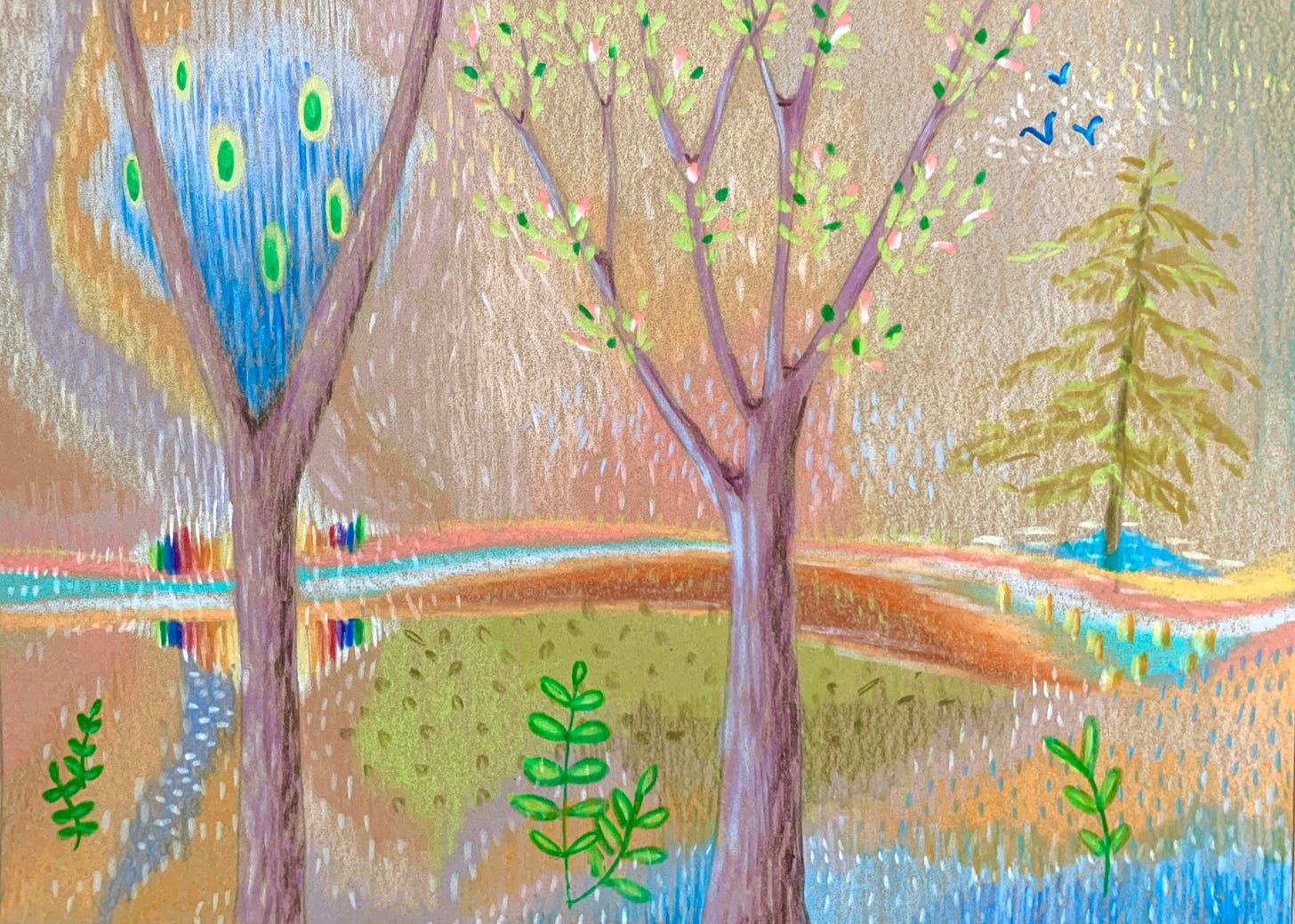
I first heard the expression “soft place to fall” years ago now, from a friend at the time. It instantly became a part of my lexicon and is a phrase I use often. My ultimate soft place to fall is in the arms of my sweetheart Rick, and there is really nothing more comforting, or that gives me more ground beneath my feet, than that very safe place, but he has not always been in my life, right next to me. I spent the majority, at this point anyway, of my adult life feeling very alone in the world as far as a life partner is concerned. Being in the same space as someone who should be your soft place to fall, but instead feels as distant and foreign as Neptune is not exactly helpful to one’s anxiety. The truth is, many of us are not in relationships that give us that kind of comfort we need, and many of us are also living alone, as I did for many years before Rick came into my life. This is where self-soothing becomes vital. I would also argue that even when we are lucky to live with a person who can be our soft place to fall, we still need to be able to be our own, first and foremost. It makes for healthier relationships, with ourselves and others if we are not always relying on someone else to help us feel better.
My own self-soothing bag of tricks begins with a warm bath and aromatic oils. If you know me well, you know that my evening bath is non-negotiable, and now and then it might even be a three-bath kind of day. Baths require me to be at home, though, not busy with work and other responsibilities, and sometimes I am traveling and have no access to a tub—so I’ve found other ways to adjust my spirit when the need arises.
Now and then I can depend too much on the comfort of food. For whatever reason food grounds me, instantly feels like a weighted blanket, and unfortunately can add physical weight, too. During stressful phone calls I’ve been known to polish off quite a bit of peanut butter, serving two purposes: keeping my mouth busy so I don’t say something I will regret, and to tie down the anxiety that can make me feel like I am flying around the room. I try really hard to not rely on that kind of soothing, but in all honesty it works pretty quickly for me. Then, it turns into guilt, and that only perpetuates all the feelings I was trying to soothe in the first place. I have learned to pace the house or sit down and scribble in my notebook, instead, but the Teddy’s Extra Chunky still has its hold on me once in a while.
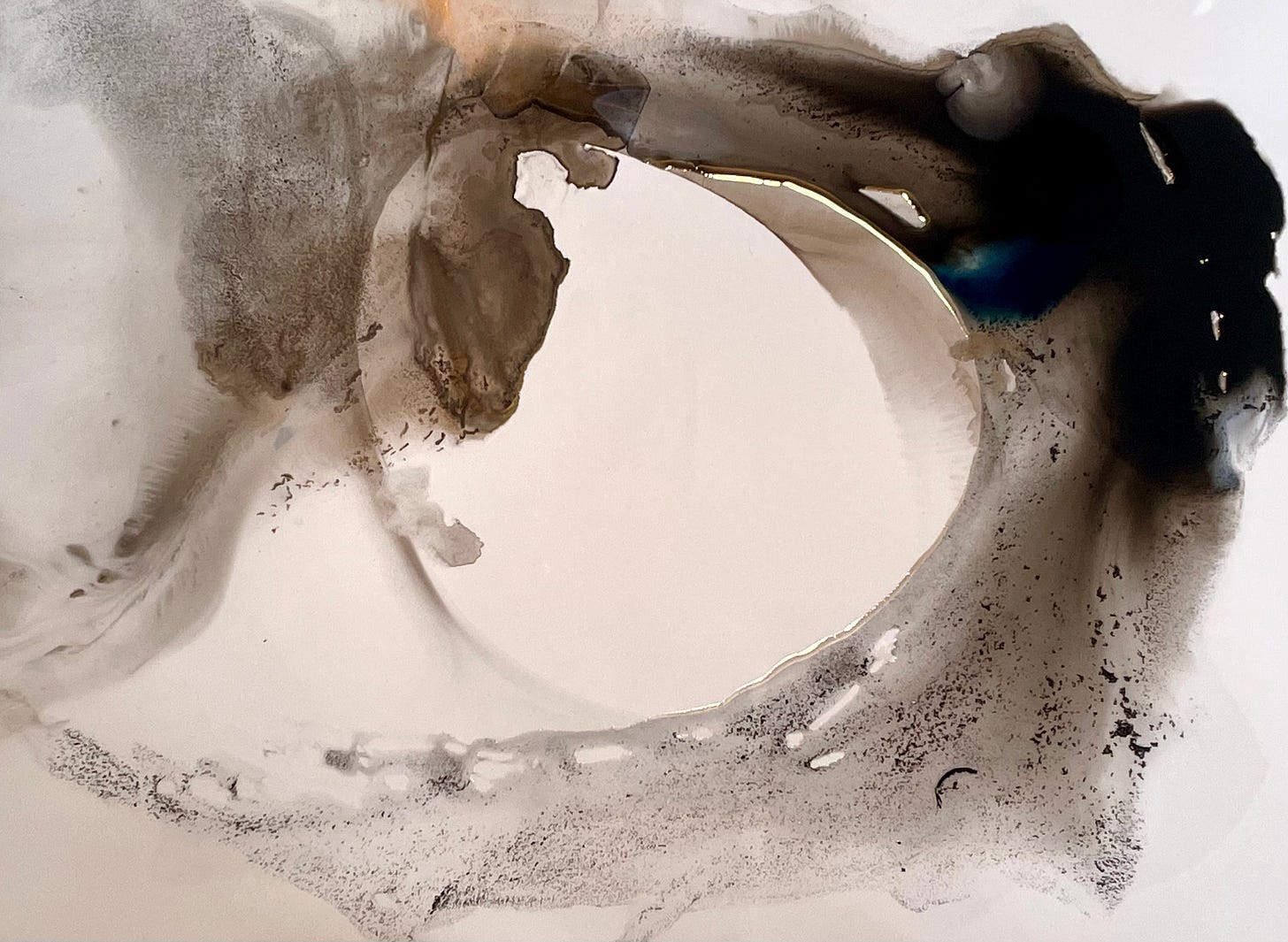
Meditation is an obvious choice for many, and for me, too. The longer I practice the less reactive I am, and so I see it more as a daily vitamin for my ability to live in the moment with fewer expectations and more and more equanimity. It’s not something I do randomly throughout a day, though, other than taking a few deep breaths here and there, so I have other things in my toolbox that have a similar effect.
Art is one of those things. I do not mean the more stressful kind of art, like when I have a vision in mind of something I want to create, or something precise and realistic like painting a very detailed and life-like bird, but the more personal, intimate and expressive kind of work that is totally in the moment, process-oriented and comes from a forgiving, dreamy place with no expectations for the outcome at all. This is mark-making as meditation. I can become lost in the flow of process when I play some atmospheric piano music through my headphones, pick up a pencil or crayon or paintbrush, close my eyes and just begin. My heart responds to the music, my hand responds to my heart, and whatever mark-making tool I am holding responds to all of it. It can be one of the most soothing, grounding, spirit-lifting passages of time I have yet experienced. I teach this way of painting to my students, and so many report the same kind of reaction. You need no special skills to enjoy this kind of art-making—it works for brand new beginners and more experienced artists alike. Every single time it is a new experience and it always leaves me feeling more in my body and more at peace. It does’t require much time, but it does require a few tools and a sketchbook so it’s not as portable as following the breath, or as my next example.
My most relied upon way to self-soothe is something I call my notebook nest. I have been keeping daily notebooks for many years now and my practice has evolved with my needs and experiences. It will always be evolving—practices are the most helpful if they are not static. I started with plain, black and white, composition notebooks, decades ago, and they served me well for many years. Now I enjoy a more sophisticated array of covers and Japanese papers that have been investments in my mental health, a place for writing about anything and everything, as well as a place to artistically express myself that requires very little time or materials. My books are so beautiful and such a comfort to me. Just seeing them in a stack on my desk brings me the same feeling as a deep sigh of relief. They exist only for me, and within their pages I can be as mundane or as intricate, as utilitarian or as profound, as plain or as poetic, as guarded or as earnest as I need to be. When I open to a creamy-white, new page, uncap my pen and begin to let the wet ink flow it feels like freedom. My notebooks have become my trusted companions, a place to let it all come out: my dreams, my fears, my frustrations, my grocery lists, my business plans, my poems, my stories and essays, my to-dos, my headiest thoughts, my most boring drivel, my complaints, my peace, my righteous anger and everything in between. My notebooks hold it all. I have a stack for my desk, and smaller version for my bag so that I am never without a way to part the pages and fall into this very comforting place.
Sometimes when I am at my desk, pen in the air, I wonder who else out there has this kind of relationship with their notebooks, because they are my people. I also wonder why everyone doesn’t have a notebook nest to rely upon. It is such a simple thing that can be as individually tailored to our needs as we desire. I think of Mary Oliver and her pocket-sized notebook she pulled from her back pocket and was never ever without. I think of Anais Nin, a prolific notebook-keeper from age eleven until her death at seventy-three. I think of John Steinbeck’s intimate journals kept as records of his novel-writing process, his travels and his daily life. Thomas Merton’s diaries that gave us such a profound insight into the dance between one man’s faith and doubts by writing about his own daily life. These famous examples inspire me, but I am also just as stirred by the most everyday kind of people, like you and I, who keep these records, too.
We are lucky to have the daily diaries of Rick’s mother and grandmother, and are amazed by their consistent recoding of the most basic things of daily life that have become a glimpse into their quotidian selves that we can spend time with now, decades later. This is why the analogue, written-on-paper kind of notebooks matter so much over the digital way of journal keeping. It’s the paper trail we leave behind that can be held in the hands of future generations, the tactile feel of the dried ink on the page in the handwriting of an ancestor we wish to connect to many years after they had lived. Was this simple ritual of writing about their day their own soft place to fall? I like to imagine it was.
Do these things matter to you? They matter to me. They matter to me so much.
I am writing about this today because it does matter so much, to me, in my own life, that I can’t imagine others might not feel the same. I am so curious about the ways you care for your spirit when the anxiety rolls in, when daily life gets a bit overwhelming, and also when things become profoundly difficult, too. What are your soft places to fall? What are the things you have discovered than can get you through? Do you need some new ones? What are some things you could try, could fit into your daily life? I would love to know. Let’s talk about it in the comments below.
Also, I have been told (reprimanded) that I need to be more aggressive in the way I market my business offerings. 😂 So here is a try: If you are interested in expressive, process-based art-making, check out my YouTube channel for many examples of the painting practice as meditation. Or send me a message for more personalised suggestions, and how to begin if you have never tried before and have no art-making supplies. And if you are interested in creating your own notebook nest, check out this juicy course I have created, launching this June. Any questions, just ask.



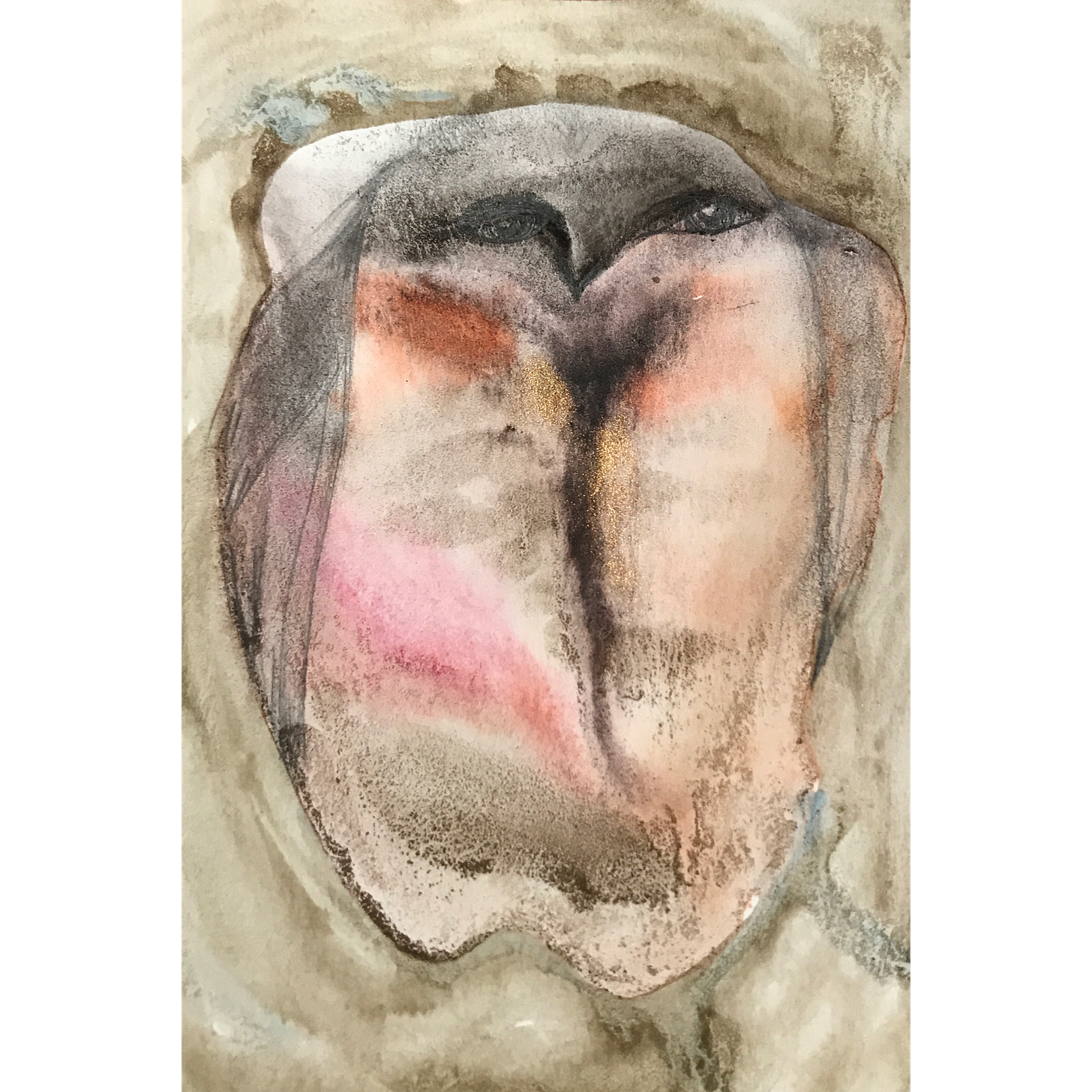
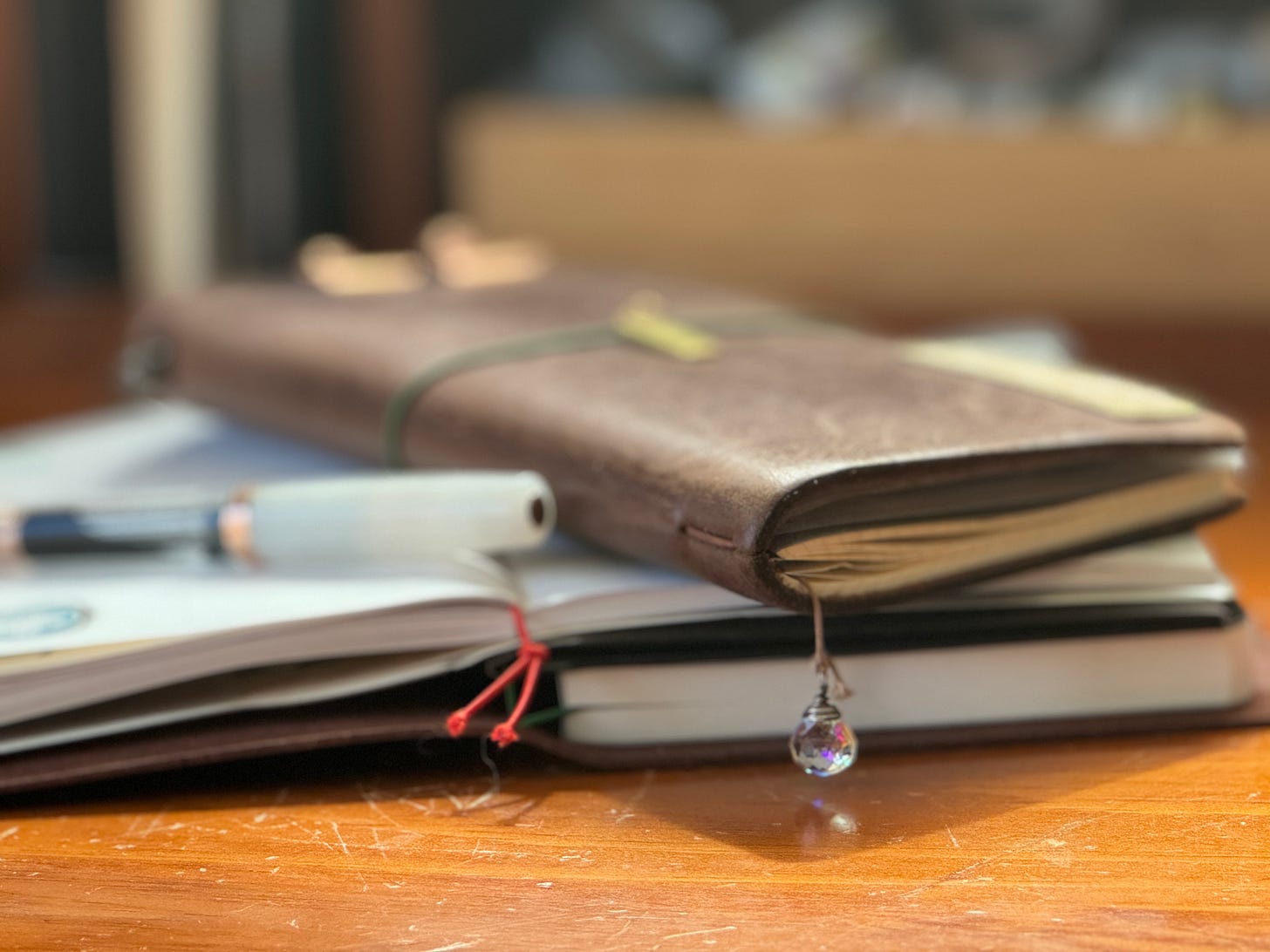
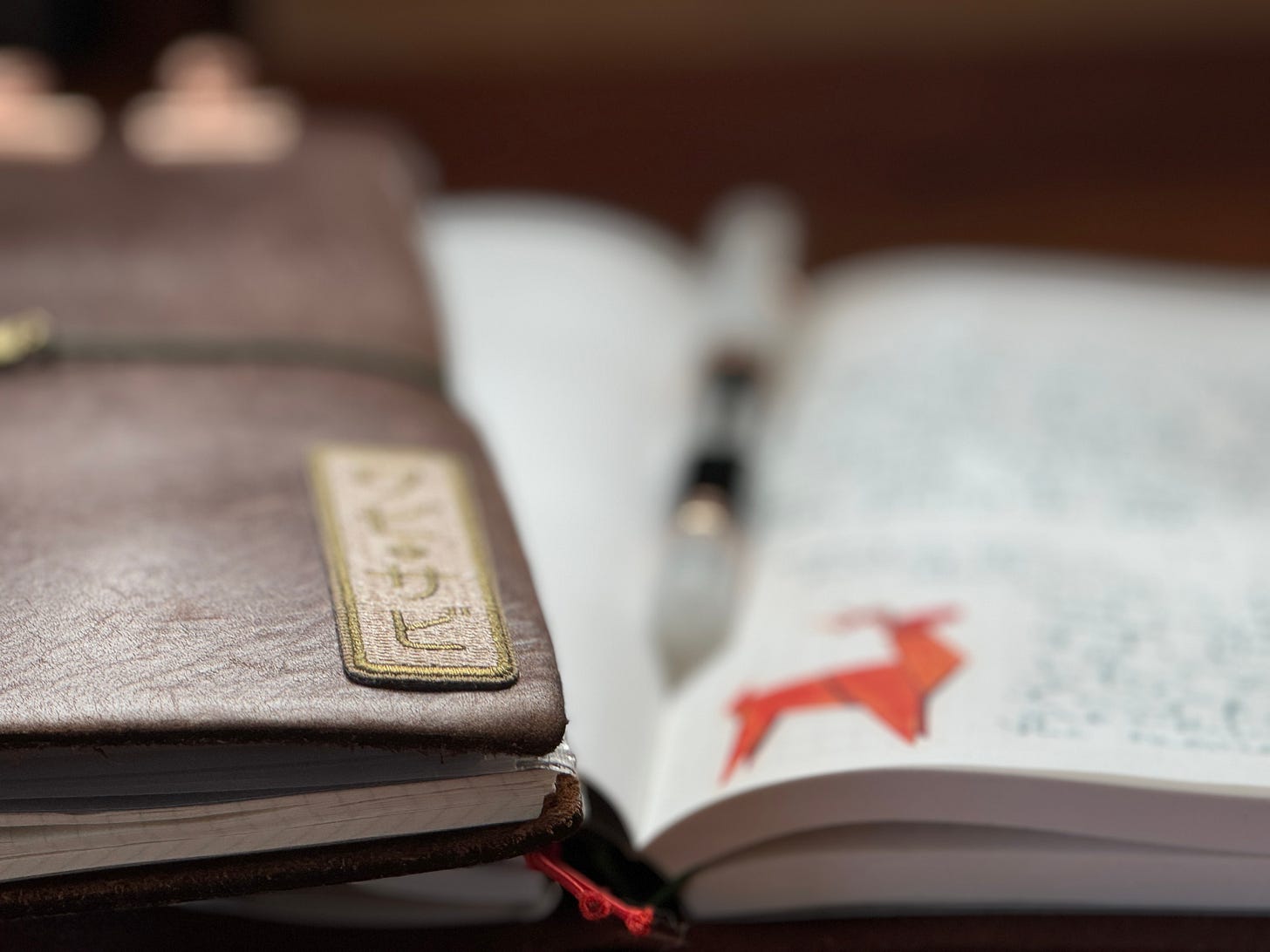
Of course Rick fell in love with you! His mother and his grandmother wrote in notebooks! And you have them? Swoon.🩵
Besides notebooks and sketchbooks I also treasure letters. It seems that I come from a family that never throws anything away. One of the poignant jobs that fell to me (gladly) was to go through the files and boxes of old letters my dad had kept. There were letters dating back into the 1600’s. Scraps of paper with lists, envelopes repurposed to write notes on and so forth. It brought to mind the preciousness of paper during a time when my ancestors lived on remote farms in New York State and paper was hard to come by. It is a glimpse into their characters, relationships, and the daily activities of their lives. I know I am fortunate to have that link with the past. Notebooks are fascinating to me, as are sketchbooks, far more than finished works of art. They’re a glimpse into another persons thoughts and process. The new course sounds wonderful!